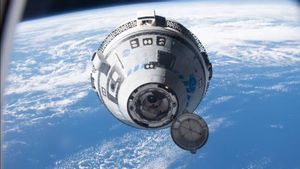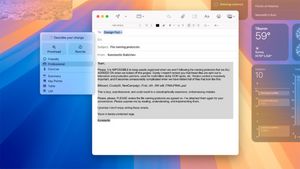JAKARTA SpaceX re-launched the Starlink satellite on Friday, July 12. Unlike usual, the space company failed to launch dozens of satellites into Low Earth Orbit (LEO) due to problems on rockets. Starlink launched from the Vandenberg Space Force Base using Falcon 9 at 09.35 WIB. The rocket climb initially went well, even a booster from Falcon 9 managed to land on the runway of Course I Still Love You. However, when SpaceX set the first burning in the second phase, ice buildup was seen around the engine. The engine burning was supposed to run about 52 minutes and 20 seconds before deploying the satellite, but the process ended faster. Hours after launch, SpaceX founder Elon Musk said that the engine was experiencing an Unexpected Rapid Dismantling (RUD). This rocket continued to deploy 20 Starlink satellites into orbit, but not where SpaceX expected.
SEE ALSO:
Musk explained that Starlink was at a lower altitude than they were targeting. Of the dozens of satellites launched, SpaceX has only managed to connect with five satellites. The company is looking for ways to increase its orbit. "The reactivation of the top stage to increase the perigee causes the engine to experience RUD for unknown reasons," Musk said via platform X. "Starlink satellites have been deployed, but perigees may be too low to raise the orbit." Musk said that efforts to raise the Starlink orbit would not go easy. They would update the satellite software to run the ion booster. "This may not work, but it deserves to be tried."
The English, Chinese, Japanese, Arabic, and French versions are automatically generated by the AI. So there may still be inaccuracies in translating, please always see Indonesian as our main language. (system supported by DigitalSiber.id)

















